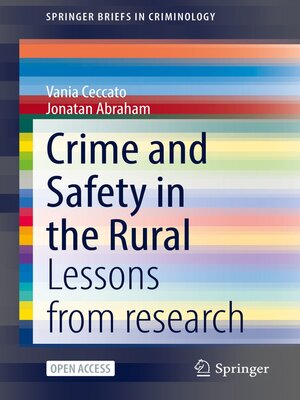Crime and Safety in the Rural
ebook ∣ Lessons from Research · SpringerBriefs in Criminology
By Vania Ceccato

Sign up to save your library
With an OverDrive account, you can save your favorite libraries for at-a-glance information about availability. Find out more about OverDrive accounts.
Find this title in Libby, the library reading app by OverDrive.



Search for a digital library with this title
Title found at these libraries:
| Library Name | Distance |
|---|---|
| Loading... |
Criminology has until recently neglected the nature and levels of crime outside the urban realm. This is not a surprise as crime tends to concentrate in urban areas and the police directs resources where the problems are. Yet, there are many reasons why scholars, decision-makers and society as a whole should care about crime and safety in rural areas. This book highlights 20 reasons why crime and safety in rural areas is a topic of relevance. We attempt to untangle currently simplistic views of the rural by discussing a number of facets of the countryside as both safe and criminogenic, and more importantly, a hybrid place worth to be examined in its own right. We adopt the notion of a rural-urban continuum that captures the nuances of places of varied nature, spanning from remote and desolate spaces to accessible and connected environments of the urban fringe. Areas on the rural-urban continuum may be in constant transformation given local and global influences, which imposes challenges for policing and long-term social sustainability.
Then, the book critically reviews a rich body of English-language literature in rural criminology that extends over more than four decades—a scholarship that has engaged researchers and practitioners in all continents. The books finishes with a discussion of the emergent research questions of the field, and offers implications for practice and the 2030 Sustainable Development Goals.







